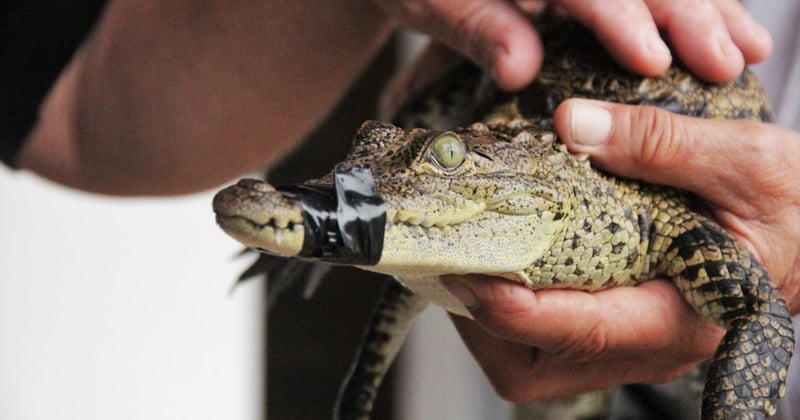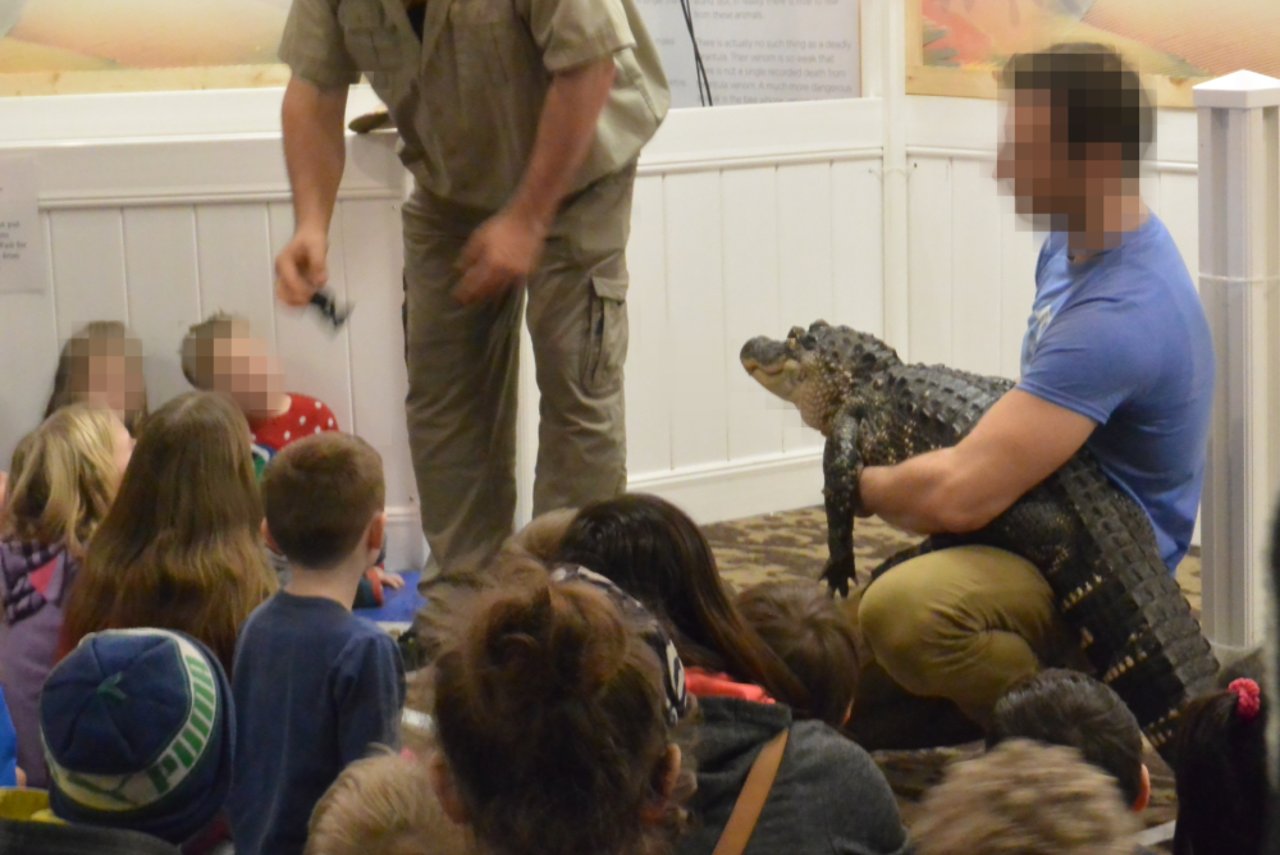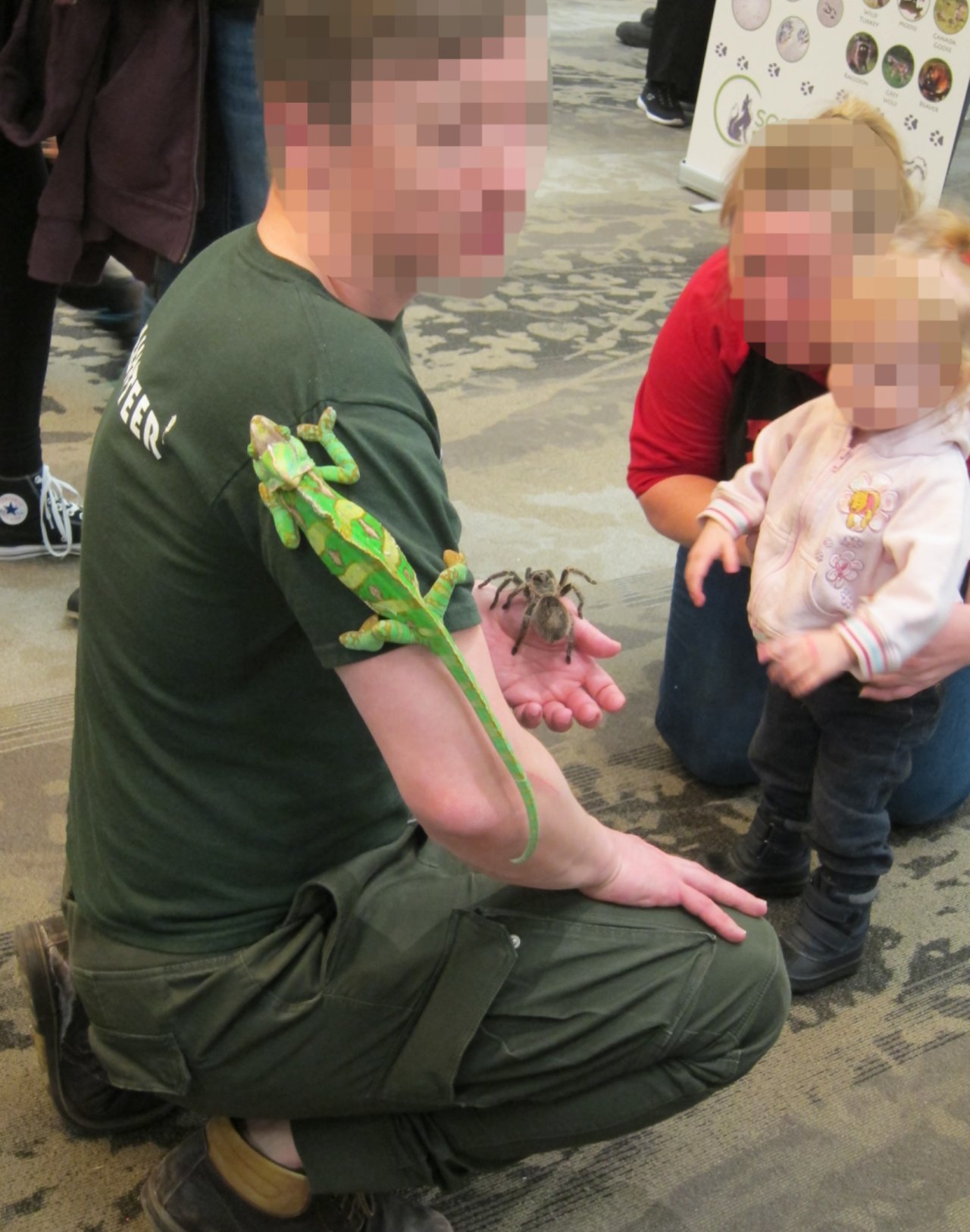
What you should know about Mobile Live Animal Programs
Blog
As an animal lover, you may be tempted by the opportunity to pet, hold, and take a selfie with a unique exotic animal up close, but don’t be fooled by the Mobile Live Animal Programs that promote these interactions!
Mobile Live Animal Programs (MLAPs) offer the opportunity to see some cool and unusual animals up close. While this may seem like a harmless activity, these programs are inherently cruel. They usually ignore the welfare of the animals and can put vulnerable humans at risk.
What is a Mobile Live Animal Program (MLAP)?
Mobile Live Animal Programs are commercial programs or activities that use live animals like lemurs, sloths, bobcats, giant constricting snakes, large parrots, as well as a diversity of other mammals, reptiles, and amphibians. They use these animals to attract customers by promoting touching, petting, or taking selfies with the animals.
MLAPs usually come in the form of a mobile zoo, but can also include travelling exhibits, presentations or demonstrations, live animal shows, and petting zoos. In most parts of Canada, anybody can run this type of business and call themselves an “educator,” due to a lack of regulations.
In most jurisdictions throughout Canada, there are no requirements for education, training, or experience for operating an MLAP business or activity. If you have some exotic animals, a car, and a website, you can start advertising yourself.
Before the pandemic, it was estimated that there are 150+ MLAPs throughout Canada. There is a concern that now pandemic restrictions are lifting, these operations will continue and likely grow in numbers.
What are the problems with these animal interaction programs?
Mobile Live Animal Programs often falsely promote themselves as being educational and conservation-focused. What they really do is put both humans and animals at risk by encouraging and normalizing inappropriate wildlife interactions.
1. MLAPs fail to address human health and safety concerns
These types of businesses tend to market their activities to young children, families, or the elderly. This is despite public health officials across the country advising that children aged 5 years and under, older adults, pregnant individuals, or people with weakened immune systems should not handle or touch exotic animals, or anything in the area where they live and roam.
Many MLAP operators seem to downplay or completely dismiss the potential risks posed to members of the public. Many wild animals carry pathogens that can be transmitted to people, known as zoonotic diseases. On top of that, stressed animals are more likely to shed pathogens, thereby increasing the risk of transmission in these environments.
Some animals also pose a potential threat to human safety due to characteristics such as size, strength, sharp teeth, or claws! MLAPs have been known to feature potentially dangerous animals, like giant constricting snakes and crocodilians. If such animals were in a traditional zoo setting, they would be subject to specific hands-off safety protocols, where physical contact is prohibited to protect the human and the animal.
A group of young children get a front row seat to a potentially dangerous animal interaction.
2. MLAPs neglect to consider the animal’s needs and welfare
There are many animal welfare concerns associated with MLAPs. These concerns are exacerbated when animals are stressed, used in multiple programs in various locations, transported long distances, or taken on extended tours.
Wild animals are just that – wild. They have not evolved to interact with humans, and if they had a choice, they would likely avoid people altogether. These programs do not consider the animals’ natural behaviours and biology. For example, there are many nocturnal (active at night) species used in these programs, disrupting their natural daily rhythm.
Most animals in these programs are confined in undersized, extremely minimalist conditions that do little to satisfy their biological, behavioural, and social needs. Plastic tubs and tupperware containers are often used to transport and house reptiles, amphibians, and invertebrates. The containers are so small that it partially or fully restricts the animal from moving. Animals, such as crocodilians, tortoises, snakes, and many more may be confined in their small containers for extended periods depending on the duration or location of the event.
On top of that, these animals are subjected to unusual and often stressful vibrations, sounds, lighting, and sights. Once removed from containers, animals are physically handled in these stressful situations in front of the public. A single animal can be touched, handled, and manipulated by hundreds of hands in a single day.
3. MLAPs risk miseducating the public on acceptability to interact with wildlife
There is no substantive body of empirical evidence supporting the claim that MLAPs are educationally beneficial. Learning outcomes may even be negative for a variety of reasons.
An indisputable negative learning outcome is that participants are exposed to animals entirely removed from their natural ecological context or condition. This experience can wrongly normalize inappropriate human utilization of animals.
Some MLAPs promote the keeping of exotic animals as pets, sometimes supporting their own business of breeding and selling exotic animals. When MLAPs are not directly promoting the keeping exotic animals as pets, they may be indirectly doing so. The presentation of live exotic animals to an audience, particularly children can result in the misconception that these animals are suitable pets. Watching someone hold or play with an exotic animal can easily override the message to not touch wildlife in your backyard. It conveys the wrong kinds of messages about animals, animal welfare, and wildlife conservation.
A young child reaches out to touch a tarantula at an exotic animal exhibit.
Looking for animal-friendly activities?
There are many innovative programs that focus on animals, nature, and conservation without resorting to the use of live animals.
Use our Wildlife Attraction Checklist before you plan your next event or trip to avoid cruel animal interactions.
Urge your provincial government to end wildlife entertainment
Wild animals are not entertainers. Sign our petition to let your provincial government know that holding and petting wild animals is unacceptable.
You can also do your part by not hiring a mobile zoo or participating in any event where you can interact with wild animals.

